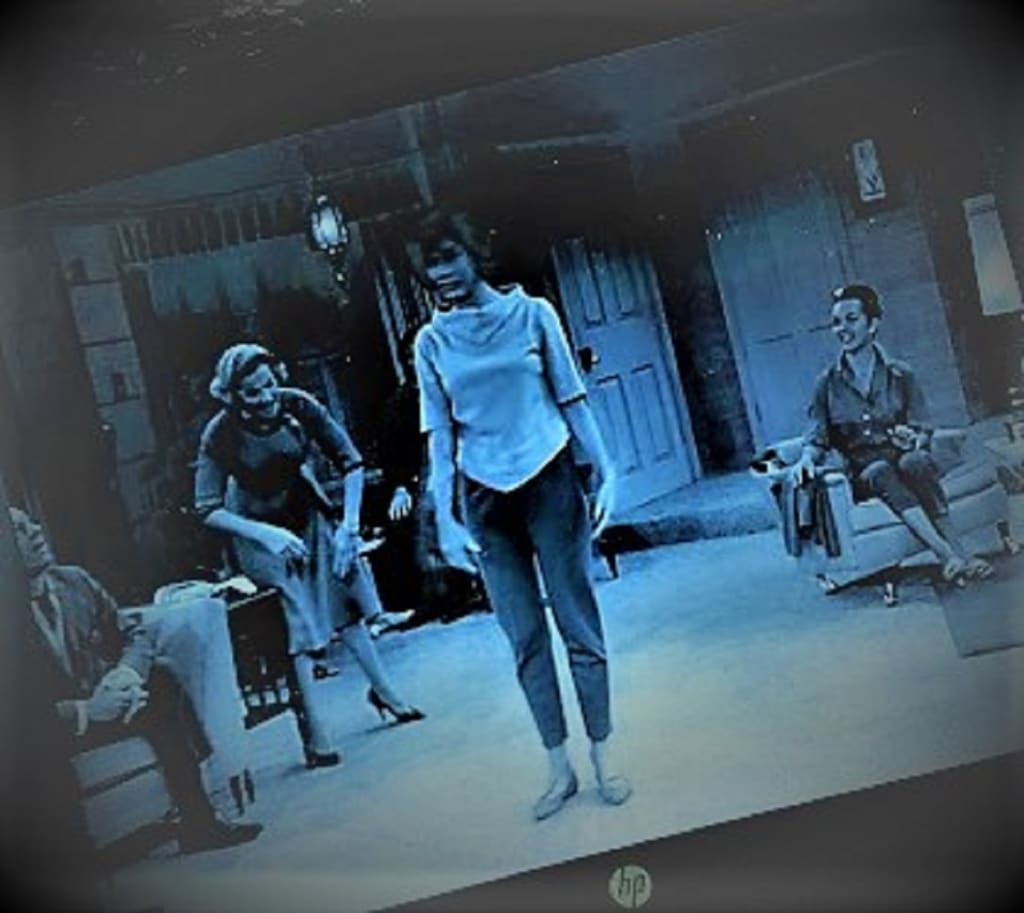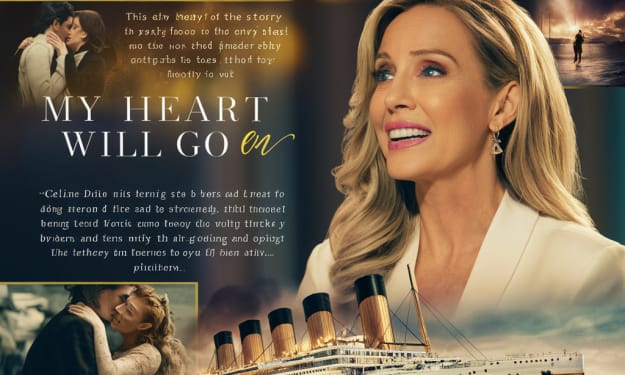Women of the Mary Tyler Moore Show
And how they affected me

When I was a child, I watched Mary Tyler Moore playing Laura Petrie on the Dick Van Dyke Show. I remember thinking she looked cool in her capri pants, slipper flat shoes, and loose, attractive blouses. She was a fun mom who was always there for her television son, Ritchie. She was sweet, a loving wife and mother, and a good neighbor.
She was goofy sounding when she got upset and whined, “Oh, Rob!” I think that’s the only quality I didn’t like about the character. That whiney-sounding voice. My mom was a strong woman who worked outside the home most of my childhood, and though I know she would get upset about things, I never heard her whine like that.
I didn’t know as a kid that Laura Petrie in capri pants was making television history. TV moms before Laura were vacuuming in full-skirted dresses, heels, and pearls, for God’s sake. I guess I thought maybe that was standard dress for women who didn’t go out into the workplace.
I think it’s easy to imagine Mary Tyler Moore as a sweet, innocent young thing and forget how much change she brought to women in the world of television. Thinking about this, I realize that her other TV show, The Mary Tyler Moore Show, was pretty influential in my life. It came on the air in 1970, a few months after I turned 12. It lasted seven years, wrapping up while I was in the Air Force.
I got on the plane in San Francisco at about 11 a.m. on March 18 and landed at Andersen Air Force Base at 5 a.m. on March 19, the day the final episode aired. I had spent my birthday in the air over the Pacific Ocean, terrified by a horror movie called The Sentinel and trying not to think about the vast expanse of deep water passing under the belly of the plane.
I’m not sure I ever did see that final episode.
The Mary Tyler Moore Show provided an array of female types that reflect different aspects of American womanhood, revealing that the whore/Madonna duality placed upon us by men is not only offensive but is also extremely superficial.
Of course, we knew that, but pop culture still sometimes plays that old tune, sadly.
The following is a short introduction to the five main women in The Mary Tyler Moore show, what I think they represent, and why I think they are important.
Mary
Mary Richards, the character played by Mary Tyler Moore, is a 30-year-old single woman who was engaged. When the engagement is broken, Mary moves from a small town to Minneapolis, where she applies for a job as a secretary for a television news show and ends up getting hired as a producer. Her new boss Lou Grant (Ed Asner), tells her she has “spunk” and that he “hates spunk.” Mary is not really interested in reattaching herself to a man and focuses on her new career.
Being a happy single working woman at the age of 30 was anathema to some at the time. In fact, when the show first aired, the St. Petersburg Times pronounced Mary a “spinster.” Having Mary in a newsroom at a time when there weren’t even women’s restrooms in the executive offices at CBS. According to an article in The Atlantic, the first female executive in network television, Ethel Wynant, had to put her shoes outside the restroom to show there was a woman in there. Not only wasn’t there a ladies’ room, but the one bathroom in the office didn’t even have a lock on it!
Mary was not only culturally important but was also an important role model for a girl my age. I saw that it was possible to follow a dream without the need to latch on to some guy. I’m not saying I learned that lesson completely.
In fact, I admittedly did not, but I internalized it. Then, all along the path where I made poor choices and wrong turns, I maintained my dream, fed into it, and when I finally figured it all out, went for it.
A little trivia I learned is that the writers wanted Mary to be divorced, but CBS executives feared people would think Laura Petrie divorced Rob. Nothing like giving the American public credit for having some brains. Divorce was also still considered to be a controversial subject.
Rhoda
Rhoda Morgenstern is played by Valerie Harper. Rhoda is Mary’s best friend, who lives upstairs. Mary and Rhoda live in a Queen Ann Victorian house belonging to Phyllis Lindstrom, in which portions have been made into apartments. Rhoda’s apartment is in the attic. Rhoda is also single but dates a lot more than Mary.
She’s also a career woman, working as a window dresser for a large department store. I think they call this job a “visual merchandiser” today. Rhoda is a fun-loving, witty person, who dresses in what I suppose they wanted to be considered “quirky” when they created the character. Next to Mary’s clean, business-like fashion, Rhoda’s is more homey and comfortable-looking.
Wearing “hippie skirts,” shawls, scarves, and head wraps, Rhoda’s style was “cool” to me. I imagined that this was how poets and artists in Greenwich Village dressed. This was how I wanted to dress. Eventually, I did.
As a Jewish woman from the Bronx, Rhoda is another ground-breaking character. Rhoda’s only flaws were her self-deprecating sense of humor and her discomfort with her body. These are realistic flaws. We’re all uncomfortable with who we are and often find ourselves mentioning the things we dislike about ourselves before someone else does it and makes us feel bad.
Even though the Fat Acceptance Movement started in 1967 with a 500-person “Fat-In” in Central Park, it was to be another 45 years before the Body Positivity Movement would really get started. For me, it was comforting to know I wasn’t alone in being uncomfortable in my own body sometimes.
Sadly, instead of having a sense of humor about it, I was more…apologetic, I think.
Phyllis
Phyllis Lindstrom is artfully played by Cloris Leachman, a happily married woman who lives in another apartment in the same building as Rhoda and Mary. Phyllis has one precocious daughter and a husband whose name is Lars, though we never meet him. She’s bossy, self-absorbed, and arrogant. As a supporter of “women’s liberation” and a political activist, Phyllis is a good role model for girls and for her daughter, Bess.
Rhoda and Phyllis don’t always get along, and exchange disparaging one-liners. Mary and Phyllis, however, get along fine, even though sometimes Phyllis interferes where she isn’t wanted.
A real negative I see with Phyllis’ character is the juxtaposition of her bossiness with her political activism and feminism. I have a feeling there was some derisive commentary in there about feminists in spite of the positive messages the show sent about the autonomy of women.
Bess
Watching the show as a teenage girl, I had some identification with Bess Lindstrom, played by Lisa Gerritsen. She is smart, headstrong, and outspoken. She calls her mom “Phyllis,” and calls Rhoda “Aunt Rhoda,” which her mother hates.
Bess thinks Rhoda is funny and really likes her. Bess calling her mother by her first name was off-putting to me a bit, but it wasn’t because she was being a smart-aleck. Rather, she called her that because Phyllis was a “progressive” parent who read a lot of books on child-rearing, which Bess also read.
Bess was well-informed about sexuality and other topics many teens in my generation weren’t truly knowledgeable about at the time. I grew to like and even envy her outspokenness.
Sue Ann
Sue Ann Niven, played by the inimitable Betty White is a hilarious woman whose sensual and overt sexuality seems over the top for a woman of her age. She’s the host of a television show called "The Happy Homemaker," where she talks about recipes, household tips, and decorating advice. She has a “thing” for Mary’s boss, Lou, which never comes to anything.
We are led to believe that Sue Ann has an active sex life. Her bedroom is essentially a fancy boudoir, with pink everywhere, automatic music, and mirrors on the ceiling. Sue Ann is a little jealous of Mary for being so close to Lou, and perhaps her youth since Sue Ann is a middle-aged woman.
Even when Sue Ann becomes friendlier to Mary, she continues to make negative remarks about things like Mary’s clothing, décor, and sex life. It turns out that Sue Ann has an affair with Phyllis’ unseen husband, Lars. Betty White once referred to Sue Ann as the “neighborhood nymphomaniac.”
Sue Ann’s importance for women is her age. Middle-aged women weren’t expected to be sexual, especially if they were single. As I wrote about Endora in my story about Bewitched, it is good to see such an empowered “woman of a certain age,” even though she’s a bit of an over-reach.
Georgette
Georgia Engle plays Georgette, a rather “ditzy” blonde bombshell who meets Mary’s coworker Ted at a party of Mary’s. Georgette is there as a guest of Rhoda, who Georgette works with at the time. Ted and Georgette hit it off and eventually end up getting married.
Ted, who is really not very smart but believes he is, likes to believe he’s always in charge and knows what’s going on, even when he doesn’t. However, Georgette, though seemingly vapid, has unexpected insight and wisdom. She loves Ted, and their relationship is sweet and tender.
She and Mary get along very well, though it seems they don’t have a lot in common. The two women are both good-hearted, compassionate, and capable. To me, they seem to be the yin and yan of working women. Mary is dark-haired and practical while Georgette is blonde and innocently sensual.
Georgette is to Mary as Lorelei Lee is to Mary’s Dorothy Shaw (Marilyn Monroe and Jane Russell, respectively, in Gentlemen Prefer Blondes). Like Jayne Mansfield and Loni Anderson, who played ditzy blondes so well, Georgia Engle brought the same energy to her portrayal of Georgette. Characters like Georgette reveal the truth that just because a woman is beautiful and seemingly vapid doesn’t mean they have no value.
About the Creator
Suzy Jacobson Cherry
Writer. Artist. Educator. Interspiritual Priestess. I write poetry, fiction, nonfiction, and thoughts on stuff I love.






Comments
There are no comments for this story
Be the first to respond and start the conversation.